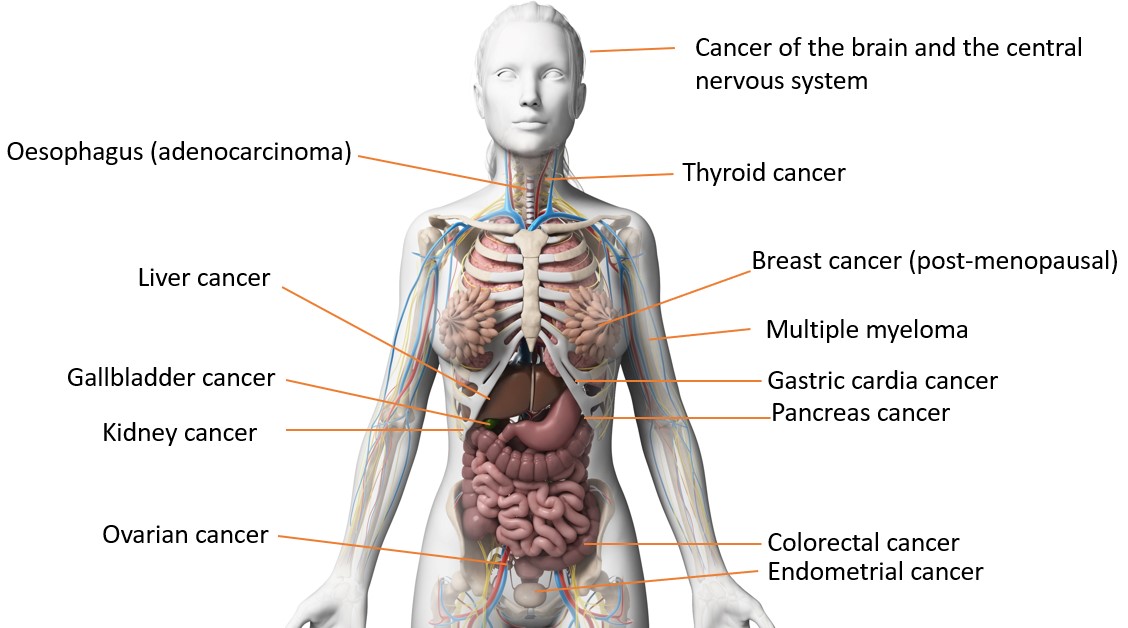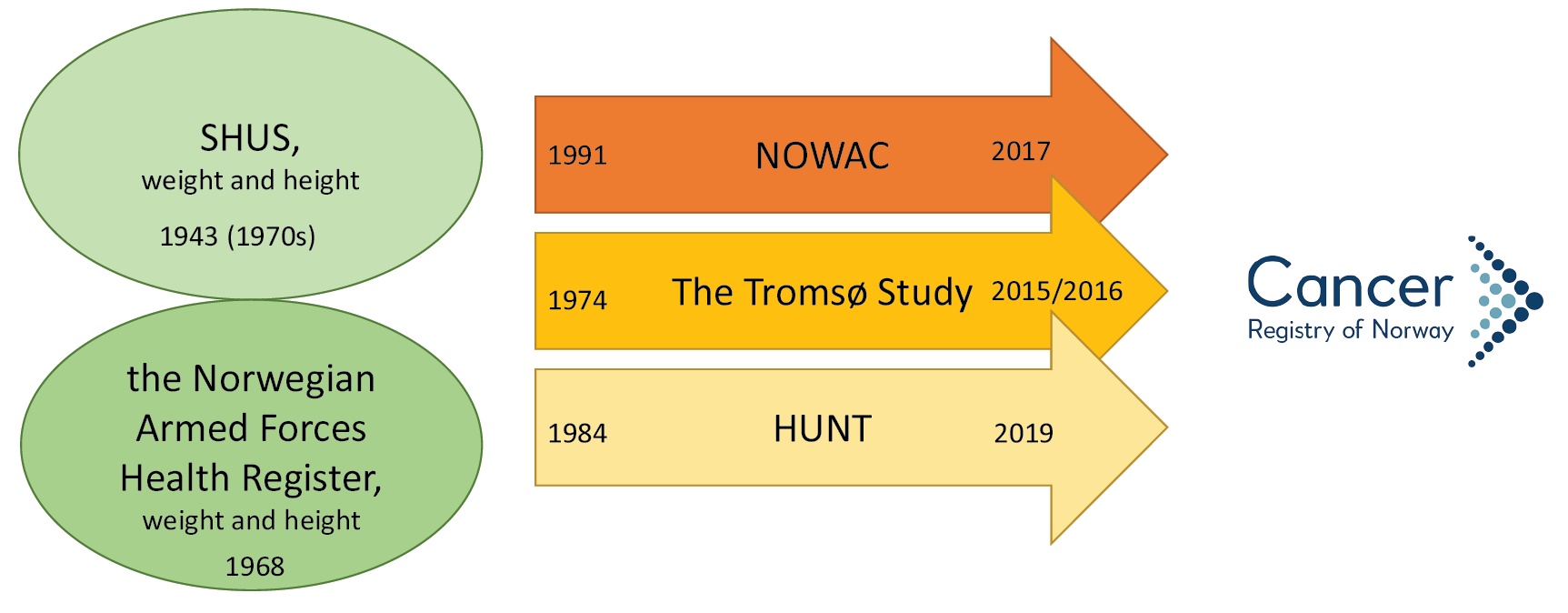About the research
Overweight and obesity is a long-standing challenge to public health. Body fatness is increasing, both in children and adults, and it is now more common to be overweight than normal weight in high-income populations.
 Overweight and obesity is associated with different diseases and cancer-types. These cancer types are referred to as obesity-related or body fatness related cancers (illustrated in the figure).
Overweight and obesity is associated with different diseases and cancer-types. These cancer types are referred to as obesity-related or body fatness related cancers (illustrated in the figure). From childhood to adulthood, the prevalence of overweight/obesity is explained by a complex interaction between lifestyle factors, genetic variations, and environmental factors. This project will examine the changes in body fatness through life, and further investigate whether different trends/trajectories in life-course body fatness are more closely related to cancer risk.
The main objectives of the project
1) To assess how the duration, intensity, age at onset and life-course fluctuations (“trajectories”) of BMI and WC relate to risk of all and specific obesity-related cancer.
2) To characterize individuals with healthy body fatness trajectories as well as those that manage to reverse an unhealthy trend, and identify which modifiable lifestyle factors (smoking, physical activity, diet, exogenous hormone use) that are associated with healthy weight changes through life.
3) To study how modifiable lifestyle factors (smoking, physical activity, diet, alcohol consumption, exogenous hormone use) and SES influence associations between life-course body fatness and obesity-related cancer.
4) To estimate the proportion and absolute numbers of obesity-related cancer cases that could be prevented by a reduction in life-time body fatness.

Data sources
The project will use data from three large population studies (NOWAC, HUNT and The Tromsø Study) and through the national identification number link to the national cancer registry. To enable for long follow-up, the population studies will be linked to the State health survey (SHUS) and the Norwegian Armed Forces Health Register.
Timeline

The project will be conducted from march 2022 to march 2026.